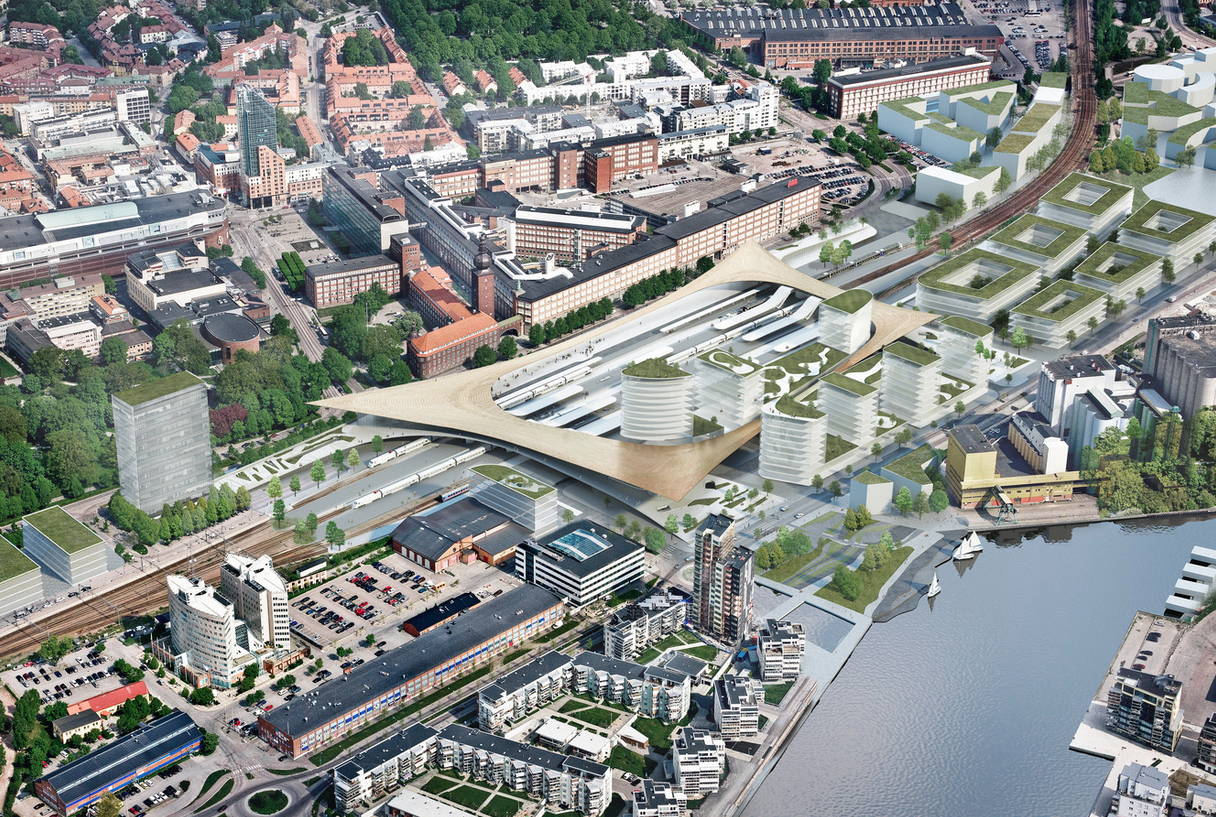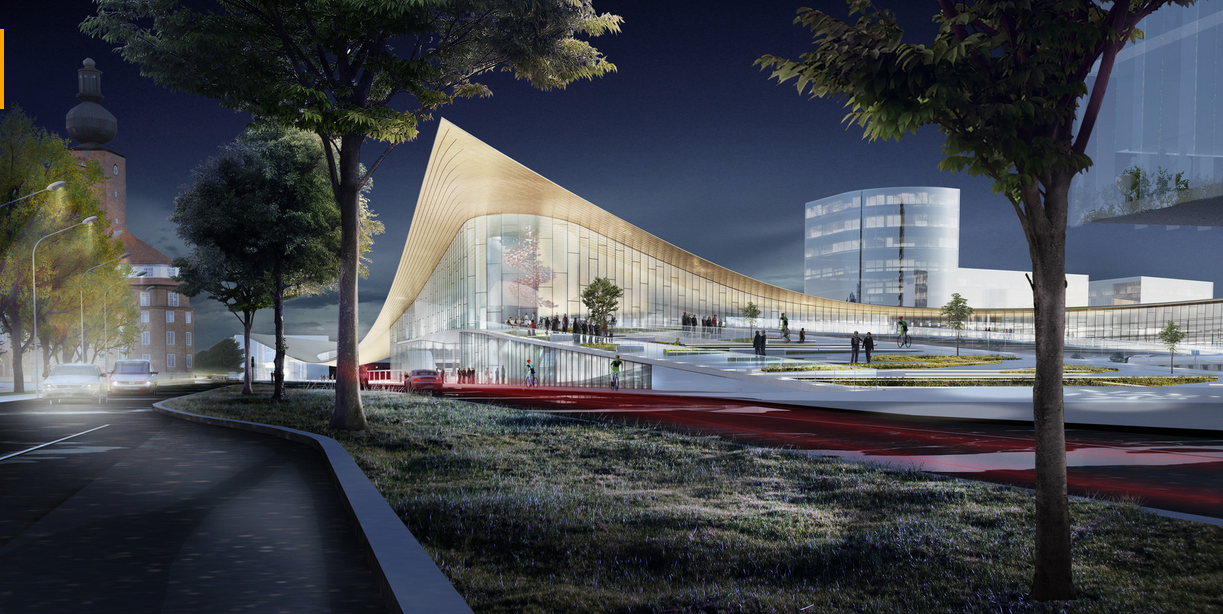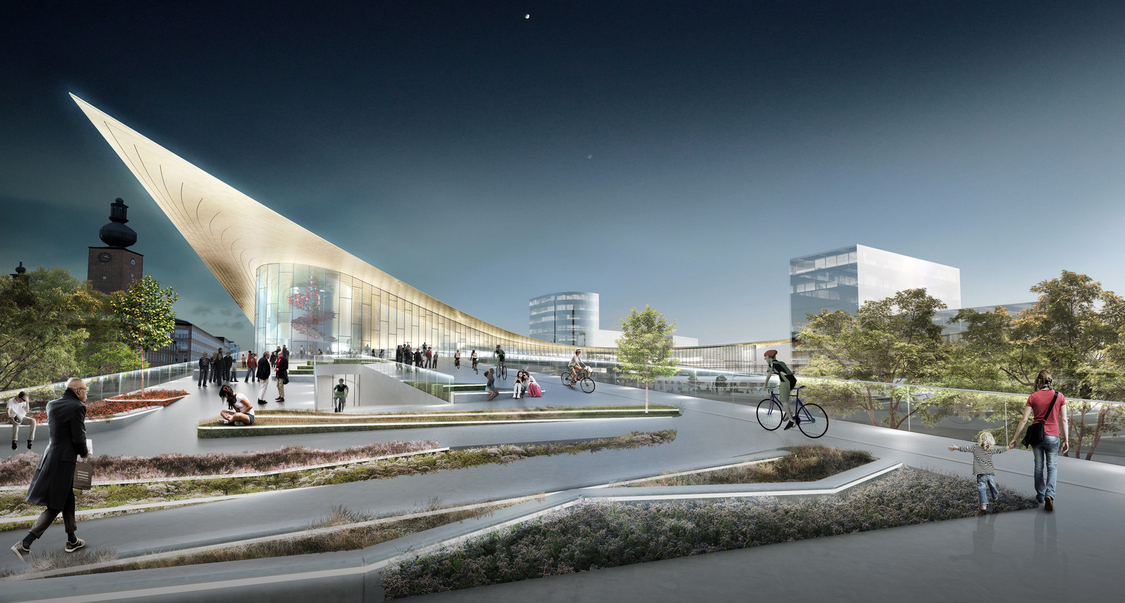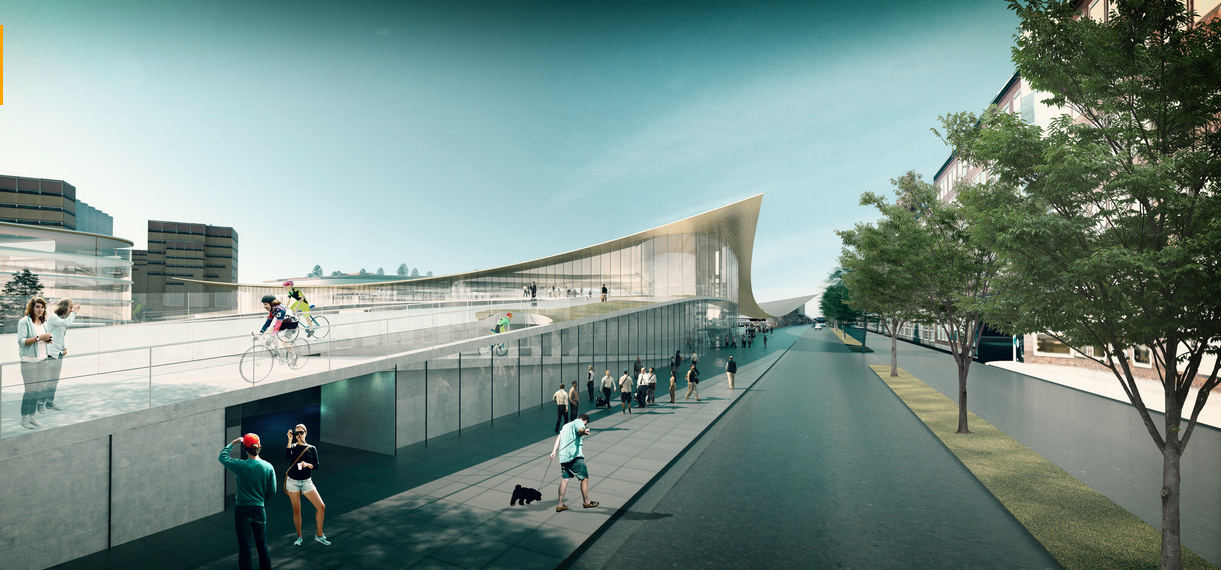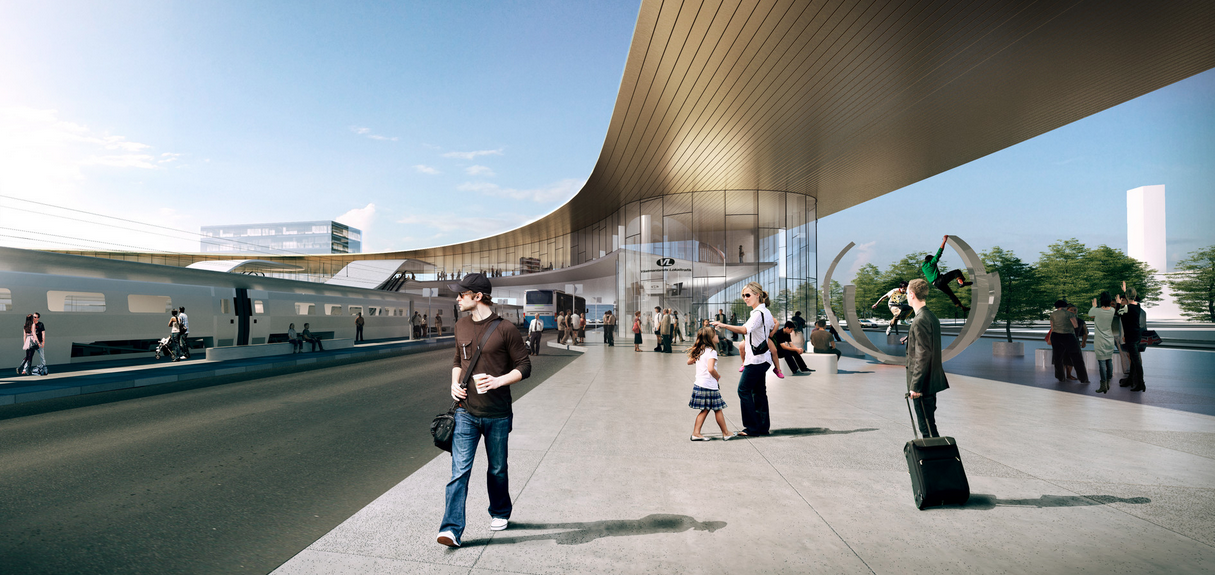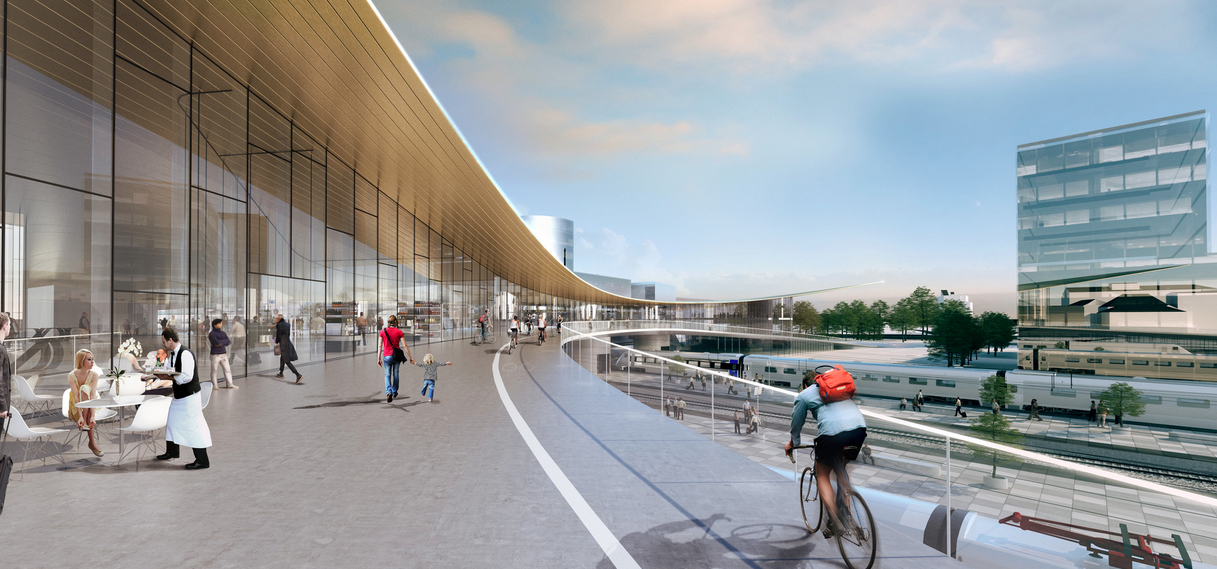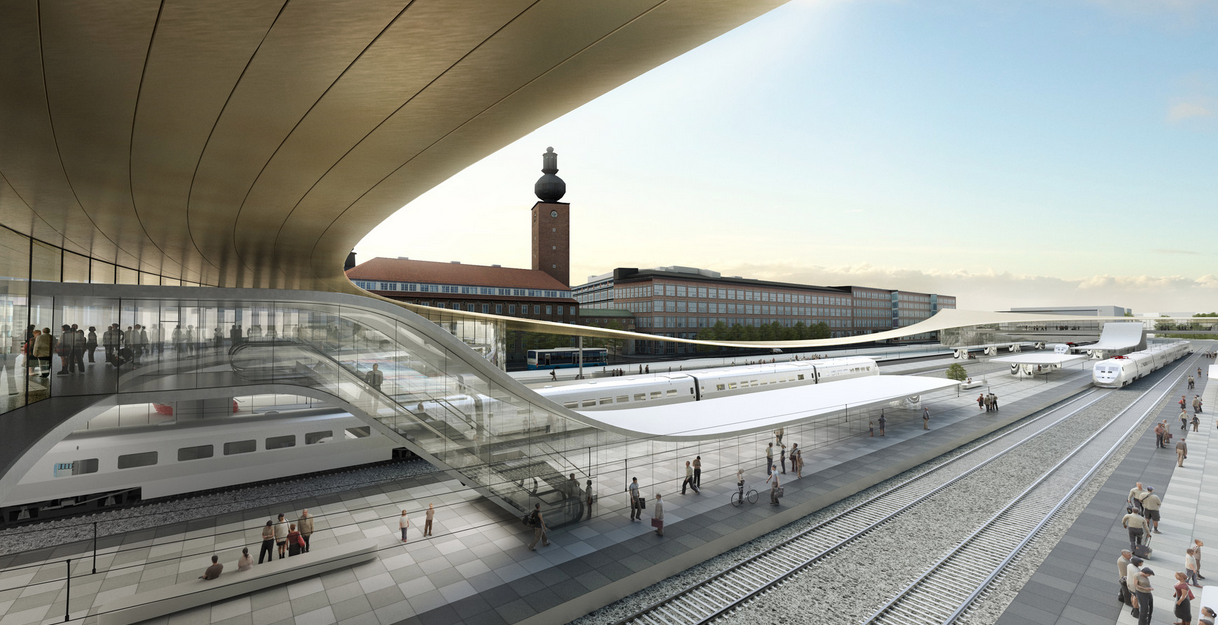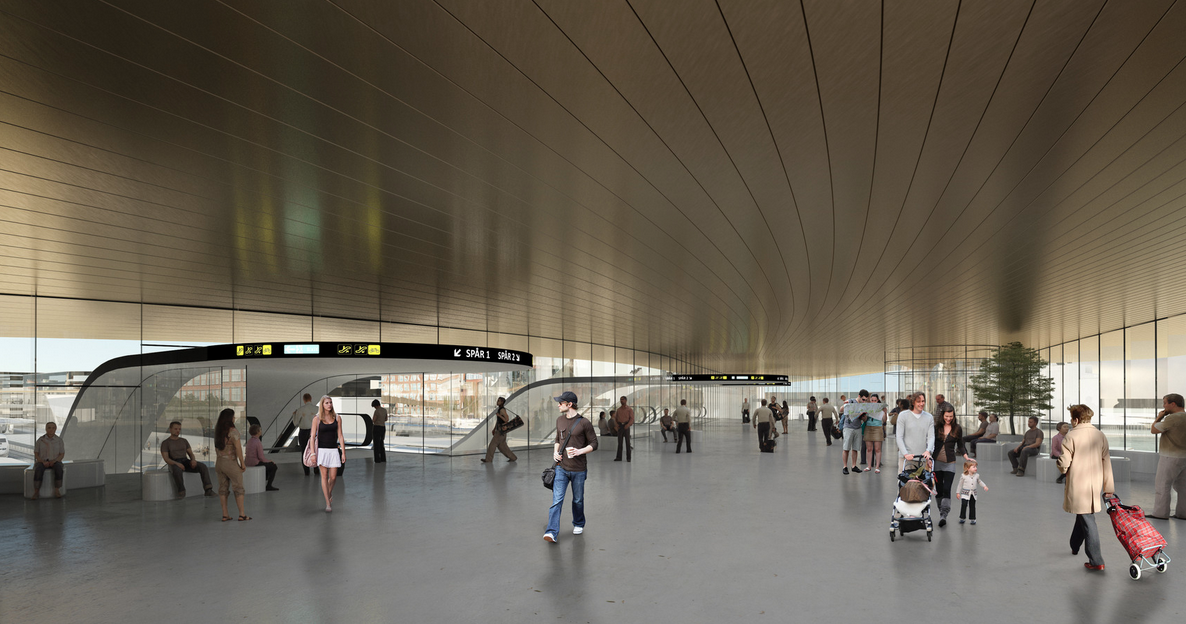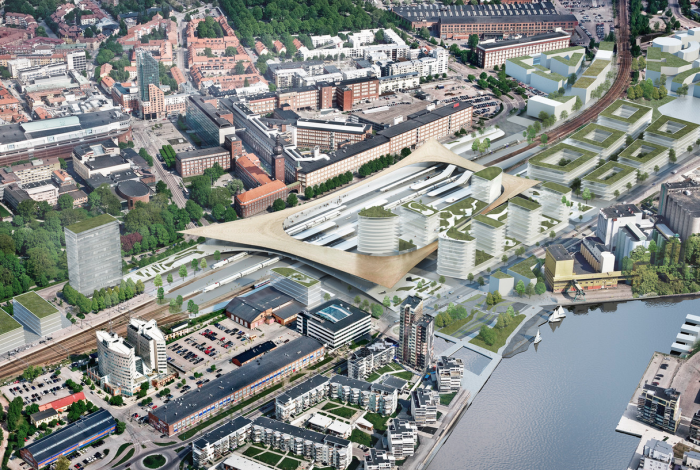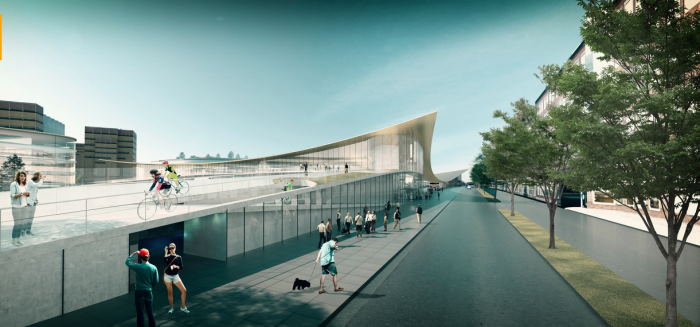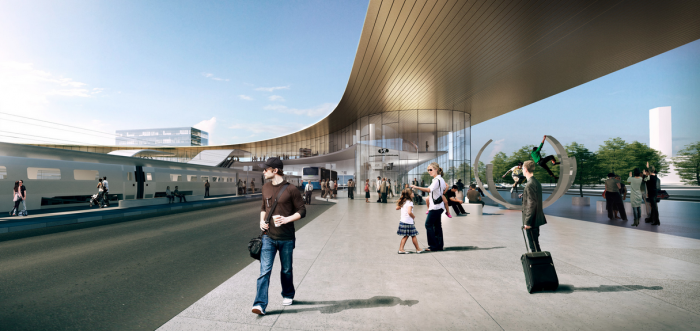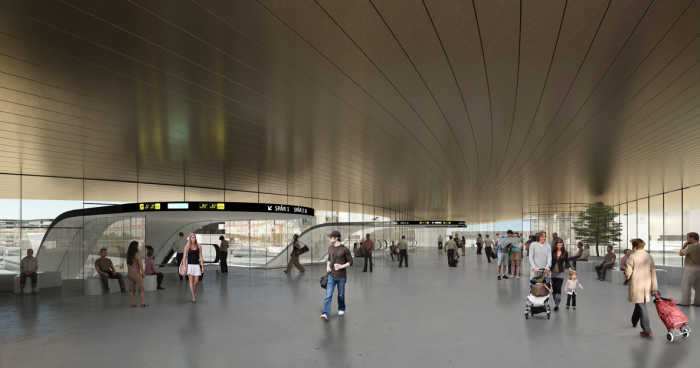Covering an area of 12,000 square meters, the completion of the new construction of the Västerås Travel Center is one of the most anticipated public projects in Sweden by architects, critics, and the Swedish public. Once again, BIG Architects have gone for the design philosophy “form follows flow”, resulting with another function-orientated design, with the same digital outlines BIG’s methodology always tends to use.
The aim of the design is rather simple and clear, to reconnect the two sides of the city split by the rail station, as explained by the firm: “The existing rail station divides Västerås – with train tracks bisecting neighborhoods of the city it serves rather than linking them together. The new 12,000 m2 Västerås Travel Center connects the areas on either side of the tracks and unites the city’s infrastructure under one floating roof.” The project is part of a larger project by the Swedish government to reconnect the transportation hub to the city, called “3B – Build Away the Barriers” redesigning the areas surrounding the railway station. The long-term urban development plan is an ambitious one that reforms the connection of a long forsaken area of the city.
The design consists of a sheet slightly lifted from its four corners, sheltering the facilities of the rail station, positioned alongside the railway. The functions are positioned this way in accordance to the flow of users, as the firm elaborates: “Rather than becoming an infrastructural node for public transportation, the new Västerås Travel Center is shaped by the flow of people and public life, turning infrastructural necessities into opportunities for social interaction.”
The firm is known for its “Avant-grade” post modernist approaches, and seeks to reshape the reputation of the architectural sector of the movement to a rather friendly one. It does so by offering digitally approached, openly designed architecture, and while its projects are rather controversial most of the time, the contrast this project provides with its surrounding seems to make it no exception. The firm is arguably one of the most popular firms in today’s architectural scene, and is the flagship of Danish post-modernist architecture.
By: Hazem Raad
